The Ultimate Beginner Guide To Owning Your First Dog + New Puppy Checklist
Last updated: January 13, 2024
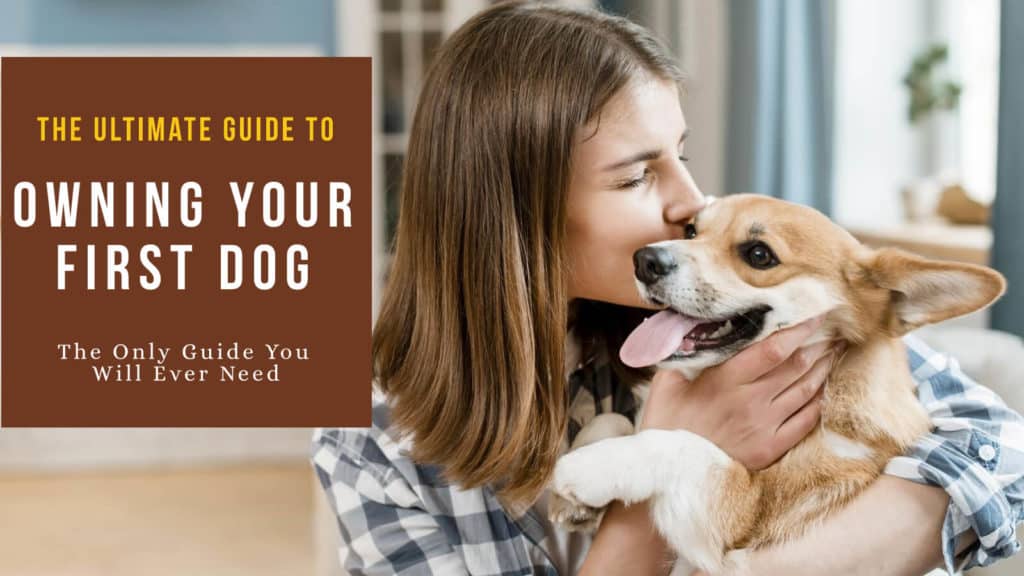
Summary
- Consider costs, time, family, home size before getting a dog. Adopting can be cheaper than buying. Research to pick the right breed.
- Buy essentials like food bowls, toys, bed, leash. Get high quality food for pup's age/size.
- Raise puppy by building trust, training, socializing. Start training early with positive reinforcement.
- Feed age-appropriate nutritious food. Visit vet annually for checkups, vaccines. Bathe when needed.
- Dog ownership is a big commitment. Be prepared for the responsibility before deciding to get a dog. Proper preparation leads to fulfilling experience.
There are very few things that beat the joy of coming home to an excited, wagging tail friend. Becoming a dog owner is truly a rewarding and wonderful adventure for people of all backgrounds and ages. However, being responsible for another living creature comes with a host of new responsibilities and few challenges too.
As a first-time dog owner, these changes may be overwhelming to handle. Hence it is highly recommended to do some preparation and set the stage for welcoming a canine companion.
In this guide, as in all our guides on Pet Supplies Unlimited for cats, reptiles, fish, and birds to cover all our pet enthusiasm needs, we bring to you all you need to know about caring for your dog. We have covered topics such as what should you consider before getting a dog, a new puppy checklist, adopting vs. buying a dog, choosing a dog breed, nutrition, training, healthcare, and many more.
Keep reading to turn yourself from a canine rookie to an able dog owner.
- 1) What should you consider before getting a dog?
- 2) Adopting vs. buying a dog
- 3) Choosing a dog breed
- 4) Dog’s first-time owner basics And new puppy checklist
- 5) Raising your puppy the right way
- 6) Training your puppy from the first day
- 7) Food & nutrition of your dog
- 8) Your Dog health
- 9) Frequently asked questions
- 10) Is it cheaper to buy or adopt a dog?
- 11) What happens to dogs that don't get adopted?
- 12) How to convince your parents to get a dog?
- 13) What are the friendliest dog breeds?
- 14) Should I get a dog?
- 15) Conclusion
What should you consider before getting a dog?
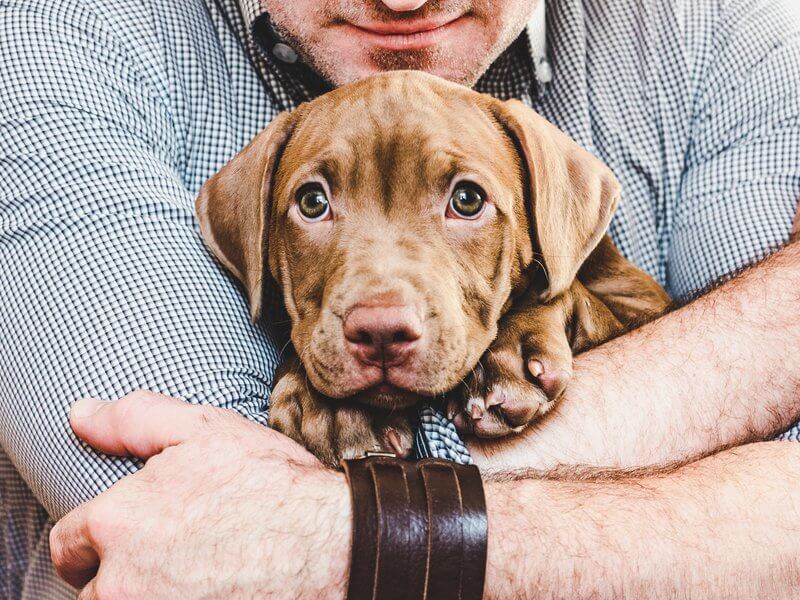
Making a dog part of your life is a privilege and responsibility. Therefore, before you bring a dog home, prepare yourself for the responsibilities associated with nurturing a dog. Ensure to make a plan for all possibilities before you bring the dog home.
This will tremendously help you and your canine friend get off to an excellent start. Here are some first-time dog owner tips you must take into consideration:
How much should I expect to spend?
When you buy a dog, you invest not only your time but also your money. The first expense you have to bear is the cost of buying the pup or dog. The price is usually influenced by the demand for that specific breed of dog.
If you choose to buy a purebred dog from a reputable breeder, it will cost you between $500-$2000. However, adopting or rescuing a pet can bring down the cost significantly.
The amount spent on pet food forms a major component of your pet budget. Apart from that, you also need to spend on routine and emergency visits to the vet. This is unarguably the most expensive part of taking care of a dog.
If you are considering professional training for your dog, it will add to your overall expenses. The cost of grooming, although minor, must also cross your mind.
Do I have time for a dog?
While pups are simply irresistible, you need to think whether you have the time to take care of a dog. Dog owners must feed a pup at least 3-4 times a day. They must also take them outdoors after drinking or eating. All these things take time.
Additionally, it takes a while for them to get potty trained. In the meanwhile, they may have accidents inside the house. Hence get used to cleaning up the mess. You will also need to spend time training the dog and helping them to socialize. And don't forget- pups must exercise too!
So, if you are ready to care for a pup amongst your other responsibilities, prepared for waking up at odd times, and spend long hours training your pup, go ahead and bring one home. However, if all this sounds too much to handle, but you still wish to have one, adopt an adult dog.
If you choose to buy a purebred dog from a reputable breeder, it will cost you between $500-$2000. However, adopting or rescuing a pet can bring down the cost significantly.
The amount spent on pet food forms a major component of your pet budget. Apart from that, you also need to spend on routine and emergency visits to the vet. This is unarguably the most expensive part of taking care of a dog.
If you are considering professional training for your dog, it will add to your overall expenses. The cost of grooming, although minor, must also cross your mind.
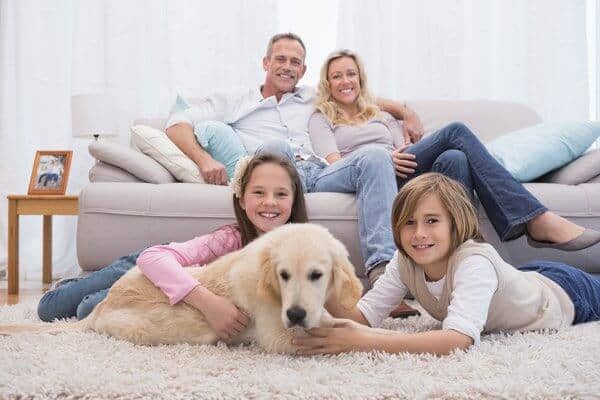
How old are the members of my family?
While deciding on the breed, consider the age of your family members. This is mainly because not all breeds of dogs are sociable.
If you have kids at home, opt for a mild-mannered pooch such as standard poodles, boxers, Pug, etc. They are more forgiving and protective of their little masters. On the other hand, dogs such as toy poodles and dalmatians do not get along well with young kids. Thus, it is best to avoid such breeds.
Dogs such as Pekingese, Chihuahuas, and miniature pinschers are very delicate. They can get easily hurt if children accidentally bump or fall over them. Hence, they are not ideal for families with young kids. Additionally, if you have aged members in your family buying high-energy herding dogs like corgis, Border collies, and Shetland sheepdogs are not good ideas.
Therefore, when you decide to buy a dog, choose one that is a good fit for your family.
Additionally, it takes a while for them to get potty trained. In the meanwhile, they may have accidents inside the house. Hence get used to cleaning up the mess. You will also need to spend time training the dog and helping them to socialize. And don't forget- pups must exercise too!
So, if you are ready to care for a pup amongst your other responsibilities, prepared for waking up at odd times, and spend long hours training your pup, go ahead and bring one home. However, if all this sounds too much to handle, but you still wish to have one, adopt an adult dog.
If you choose to buy a purebred dog from a reputable breeder, it will cost you between $500-$2000. However, adopting or rescuing a pet can bring down the cost significantly.
The amount spent on pet food forms a major component of your pet budget. Apart from that, you also need to spend on routine and emergency visits to the vet. This is unarguably the most expensive part of taking care of a dog.
If you are considering professional training for your dog, it will add to your overall expenses. The cost of grooming, although minor, must also cross your mind.
Is the size of my home convenient?
One of the factors you need to think about while pondering the question "should I get a dog?" is your home's size.
The general rule of thumb is the bigger the dog, more the area required for housing the dog comfortably.
Thus, if you stay in a studio apartment, it is probably not good to get a Great Dane. Likewise, if you live in a rural area, a petite Pomeranian may not be the right option.
Apart from the size of your home, the dog's temperament is another point to bear in mind. For example, although small, Chihuahuas tend to bark excessively while, on the other hand, Great Danes, despite their large size, are calm and quiet.
Additionally, if you are staying in a rented property, you will need to check up on the pet policy before getting a puppy home.
Adopting vs. buying a dog
Once you have decided upon the breed of dog, you need to think about where to get a puppy from. You can either choose to adopt or buy. Both have their own set of advantages.
Advantages of adopting
- Lower cost
- Have the option of Choosing a dog of any age.
- Feeling proud about saving a life
- Higher possibility of finding a trained dog
Advantages of buying
- Get the exact breed you desire
- Train the dog according to your ways
- Opportunity to work with a reputable breeder
- Be fairly certain of getting a healthy pup
After reading about the advantages of adopting and buying, you probably now have a better idea of which one is right for you. The main thing to remember is to take enough time to weigh in your options. This will help you enjoy many years of companionship.
Choosing a dog breed

No one can withstand the charm of cute little puppies. But buying a dog on impulse is never a wise decision. Thus, put some thought into it and plan. Always remember that it is a long-term commitment.
Continuously ask yourself the question-"am I ready for a dog?"
If you have answered this question in the affirmative without batting an eyelid, you will probably be ready for the next step- choosing a dog breed.
Selecting the dog breed that is right for you requires careful planning and thought. There are numerous factors to consider, such as your overall health, lifestyle, and energy levels. Apart from this, you also need to spare a thought about the size of the dog you want to include in your life.
Bringing home, the right breed of dog is important to ensure you remain happy with your decision. Therefore, do adequate research before arriving at your choice.
How many dog breeds are there?
When you are at a dog park chit-chatting with the other pet lovers while your tiny furry buddy runs around, the usual conversation that follows is:
What is your dog’s name? What is their age? What breed is it?
The last question normally stumps many people as they come across the names of exotic breeds that they have never heard before.
The American Kennel Club (AKC) lists 193 dog breeds officially. However, there are 340 breeds recognized by the World Canine Organization worldwide.
With such a wide range of choices, it is difficult to pick one easily. Therefore, narrow your search based on your time, family members, lifestyle, finances, and home size.
Understanding your specific needs about dog breeds
While there are several breeds of dogs that are great for keeping you company, others help people by doing serious work. Below are a few types of work dogs:
- * Service dogs- They are also called assistance dogs as they can be specially trained for assisting people with disabilities.
- * Therapy Dogs- such dogs are an integral part of animal-assisted therapy. They provide emotional support to injured or sick people.
- * Herding dogs - These dogs are well trained to work with livestock like cattle and sheep.
Thus, before getting a puppy, you must decide whether you want a pup for companionship or any other specific purpose.
What dog breed is best for me?
Getting a puppy for your home is exciting, as well as nerve-wracking. After all, you commit to taking responsibility for a living being who will henceforth be dependent on you for the rest of his life.
Breeds such as Greyhounds, Pomeranian, and Golden Retrievers are good for first-time dog owners as they are among the friendliest dogs.
On the other hand, Siberian Husky, German Shepherd Dog, and Pekingese are ideal for experienced owners.
By seriously assessing your needs, you can pick a breed that will fit you and your family.
Dog’s first-time owner basics And new puppy checklist

If there is anything more fun than welcoming your new pet home, then it has to be going on a shopping spree for puppy supplies. Even though your new paw friend can thrive on your love and attention alone, there is no harm in going the extra mile and letting your dog indulge in a plush bed, an entertaining chewy, or a fun toy.
Here is a list of 12 items that are a must on any new puppy checklist:
Toothbrush
The first item on the puppy checklist is the humble toothbrush.
Just like in humans, brushing regularly is important to maintain the dental health of dogs. Although it can be difficult at first, the dog will slowly adjust to the whole process fairly easily if introduced early.
To care for your dog's teeth, buy a toothbrush and toothpaste specifically made for your pet. It will help to fight against tooth decay, gum disease, and tartar buildup.
You will be pleasantly surprised to find organic toothbrushes and paste for pups. These are BPA-free and have no chemicals, preservatives, pesticides, or dyes.
Bowls
Featuring next on the puppy supply list are bowls.
When you are shopping for dog bowls, the few factors you must consider are style, cost, purpose, safety, ease of cleaning, and durability.
There are plenty of options you can choose from. You can opt for ceramic bowls, plastic bowls, automatic feeding bowls, stainless steel bowls, etc.
To avoid spillage, choose the "non-tip" kind of bowls. If not, you can put a non-slip plastic mat beneath the dog's bowl. Among various options, stainless steel bowls come highly recommended as it is more hygienic, and it is easier to clean them.
The other puppy necessities you need to shop for are collar, tags, and leash.
A cute collar with a nice leash is necessary, especially when you have to take your dog out for a walk. Soft leather or nylon collars are preferable. Otherwise, you can also choose a dog collar that can expand as the pup grows.
Your pup's ID tag must be securely fastened to his dog collar. It must bear his name, your phone number, and address.
When buying a leash, you can choose either a long or short one, based on your preferences. The ideal length varies between 4-6 feet. Check our guide on retractable dog leashes to make an informed decision.
Cleaning Brush
Up next on the puppy checklist are brushes.
Regular brushing is necessary to keep the dog's coat tangle-free and healthy. It also improves blood circulation and reduces the risk of any skin irritation. While choosing combs and brushes, explore options that are best suited for the length and texture of your pup's coat.
Brushes with soft rubber bristles are largely preferred. Additionally, you can also check brushes that work well on dry as well as wet hair. Whatever you choose, make sure that it is easy to clean.
Taking the time out to brush your dog's coat is also a great bonding experience.
Crate
A crate is a safe place for your pup to stay away for a couple of hours. They come in 3 distinct varieties:
- Wired- these fold flat and provide good ventilation.
- Plastic- they are cozy and are highly recommended when traveling by air.
- Cloth- These are lightweight but are not suitable for unruly dogs as they get shredded easily.
When choosing a place to keep the crate, opt for one that is quiet. This will help your pup to sleep comfortably without getting disturbed. You can even line it up with something warm and soft like an old blanket.
Pet gates
Pet gates must also feature in your list of things you need for a puppy. They are essential for not only keeping your house safe but also for keeping your dog safe. Pet gates are available in various sizes and configurations.
The factors you must keep in mind while choosing pet gates are the quality of the materials used, durability and strength of the construction, and the ease of setting it up and dismantling it.
The old-fashioned accordion-style gate must be ideally avoided as pups can get their neck stuck in them. Give preference to gates that have a safety lock and are made from non-toxic materials.
Shampoo
Although regular shampoos do work on dogs, one must not make it a habit as human shampoos disrupt a dog's acid mantle. This causes it to be more vulnerable to viruses, bacteria, and parasites. Therefore, have a talk with your vet about a dog shampoo that is more suitable for your paw pal.
Dog shampoos are excellent for maintaining your pup's coat. The fur will become shinier and smooth. Not to mention, they will smell fragrant. The shampoo will also help to remove any debris from their coat thoroughly.
With so many benefits for your pet, don't forget to include a good smelling dog shampoo in your new puppy checklist.
Toys
Dogs simply love to play with toys. However, some toys can prove to be hazardous for dogs. For example, dogs tend to tear open toys fitted with a squeaker or other small pieces inside. Adventurous pups may swallow them and choke.
Therefore, buy tough toys for your pet instead. It will make playtime less stressful for you.
Apart from giving you peace of mind, tough toys are more durable and keep your dog engaged with hours of fun. Such toys also help them relieve their anxiety and frustration. To help you pick the right toy, ask your vet for suggestions.
Poop bags
The next item on the new dog checklist is poop bags.
When you become a dog owner, cleaning up poop is part of the job description. Whether you walk your dog in the yard or outdoors, you will have to stoop the poop now and then.
Moreover, it is the right thing to do as no one wants to step on a dog's mess.
Poop bags and poop scoopers make picking up your pup's business simple and less squirmy. If you are not in favor of using plastics, there are many biodegradable poop bags available.
Cleaning Supplies
When getting a puppy home, you need to be mentally prepared for some mess too. It is only natural for dogs to have accidents when they are house-trained. Thus, it is better to keep a stock of some cleaning supplies like enzymatic deodorizers and stain removers. This will greatly help to clean up the mess and eliminate the foul smell.
Cleaning the area after an accident is extremely important as your dog will continue to return to the area if he gets a whiff of his scent. It is in your pet's best interest to use products that are non-toxic and chemical-free.
Bed
When deciding on what to buy for a new puppy, a comfortable bed must certainly pop in your mind.
Selecting the right bed is very important for ensuring your dog’s health and comfort. Therefore, just as you would put a lot of thought while buying a mattress for yourself, consider certain factors like your pup's age and weight while buying a dog bed.
Manufactures today design dog beds in numerous novelty shapes such as a donut, a race car, and even a bone! Explore the various options and settle for one that feels most appropriate for your pet.
Related: Best Chew-proof Dog Beds
Nail Clippers and/or Grinders
The final item on our new puppy checklist is nail clippers.
Most dogs do not like getting their nails trimmed; however, it is necessary to ensure their well-being and health. Letting the nails grow too long may cause it to curl back and grow inwards. This will cause pain to your pup and will require treatment from a vet.
To avoid this situation, take your dog to a groomer or clip them yourself with the help of a good nail clipper. As an alternative to clippers, you can use a good dog nail grinder if your pet is not comfortable with clippers.
There are 3 types of nail clippers: scissors, guillotine, and grinding tools. Choose one that is most comfortable for you to handle and has a quick guard.
Raising your puppy the right way
After you buy a dog, you must begin raising them the right way from day 1. We strongly advise this as it takes time to teach your pet to behave and transform themselves into a perfect pooch. It is necessary to teach the pup his place in your home, and this is only possible by following a consistent routine.
You also need to be patient and shower your pup with heaps of encouragement. We suggest the use of positive reinforcements as this will help them build happy associations with appropriate behavior.
Here are a few pointers for helping you in this process:

Developing trust
Talk calmly: Dogs have very sensitive ears and can get easily startled by loud noises. Therefore, watch your tone. They may feel threatened or frightened when you raise your voice.
Maintain your composure: Your demeanor plays a crucial role in winning the trust of your canine friend. Hence, do not get agitated or angry when interacting with your dog.
Avoid spanking: When you are trying to build trust, your actions must demonstrate that you will never hurt him. Thus, you must avoid spanking as it will whittle away their trust.
- Give them choices: Telling your dog what they cannot do all the time is not fun for them. Instead, offer them alternatives that are just as much fun.
Understanding your dog behavior
Among the various first-time dog owner tips making an effort to understand your dog's behavior is the best.
Below are some of the most common behaviors displayed by dogs and their meanings:
- Tail wagging: If a dog wags his tail slowly from side to side, it means they are happy and relaxed. However, if the dog tucks its tail between their legs, it indicates that the dog is afraid or stressed
- Posture: If a dog hunches towards the ground, he is feeling scared. On the other hand, if he rolls onto his back and exposes the belly, he is happy and is asking for a belly rub.
- Barking: This is an essential form of canine communication. Pet parents will be able to decipher the barks and understand if they are feeling bored, scared, or confused over some time.
Creating Good Habits
Inculcating good habits in your dog must also feature in your new puppy checklist. This is necessary as it will ensure that your pet is always well-behaved.
Dogs learn their social etiquette from their human family. Therefore, if you get riled up when he jumps on you during greetings, he will continue to do so, just for the thrill of getting a reaction.
On the other hand, if you stay calm and encourage the dog to roll over for a belly rub, he will begin to consider it as a good habit.
For creating good habits in your dog, it is essential to get all your family members on board. Consistent behavior will help most friendly dogs learn good habits faster.
Training Your dog for home life
After you buy a dog and bring them home, you need to start their training. This will help them adjust to their new home life.
To ensure your pup copes well in the new environment, it is critical to train him/her in 3 basic commands:
- Go to your spot: training a dog to do this will prevent them from hovering around the dinner table. The spot may be his bed or a mat.
- Make eye contact: Training your canine to maintain eye contact will instill confidence in them and help reduce stress or anxiety when interacting with humans.
- Tolerate touch: As the dog will become an integral part of your family, it is essential to train them to tolerate and respond to touch.
Training your dog on these 3 behaviors will help him settle down with his human family and lay the foundation for an amazing life.
Making it comfortable around strangers

Even the most friendly dogs tend to go berserk when they encounter a stranger. They hide, tremble, or cower when a new person enters the household.
Here are a few tips to guide your dogs to get more comfortable around strangers:
- Teach visitors: Ask visitors to ignore your pet completely. This will help the dog to understand that the stranger does not pose any threat and won't harm him.
- Get the dog to sit: If your dog starts to look startled, command them to sit. This form of obedience training is an excellent way of distracting them from their immediate fear.
- Practice: getting a puppy to socialize with strangers is a slow process. The dog must learn to undo his fear of strangers and develop a positive association with them. Therefore, pet parents have to be very patient and provide their pets with opportunities to practice.
Can I have a puppy when I work?
People often ponder over the question - should I get a dog when I have a full-time job? If you are one of them, let us assure you that this is possible.
Below are a few ways to manage your pet situation:
- Enlist your family's help: If working from home or taking the first couple of weeks off is not an option, ask a family member to drop by and spend a couple of hours with your pet.
- Hire a pet sitter: If the above-listed option is not feasible, opt for a professional pet sitter’s service. Check their experience and credentials before hiring one.
- Choose a good daycare: If family and friends are not around, putting your pup in a pet daycare is a great idea. Your pup will enjoy the company of other dogs while being under the watchful of a professional.
Training your puppy from the first day
After getting a puppy home, it is of paramount importance to start its training right away. Always remember that a pup that is well-trained will grow up to become a fantastic dog to have around while an untrained pup will soon turn into a problem dog.
Positive reinforcement should be the basis of the training. Also, keep the training sessions brief as pups have very short attention spans. 5 to 10 minutes is ideal. Additionally, make sure to end the training session on a positive note. Shower heaps of praise or give him a treat as a reward for his good behavior.
Types of Home Training
Besides thinking about puppy supplies, pet parents must also spend time deciding upon the type of home training they wish to follow for their pets.
Out of the several different types of home training, here are the top 2:
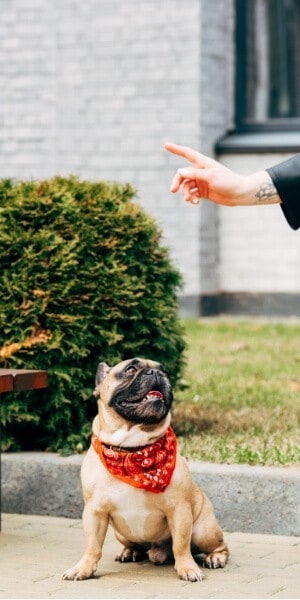
- Clicker training: It is a form of positive reinforcement training. It derives its name from the use of a small metal cricket that produces a sharp noise. The clicker is only used whenever the dog achieves the desired behavior. This helps the dog to associate that particular good behavior with a click and a possible reward.
- Mirror Training: The premise of this method is that dogs learn through observation. In this method, the trainer may use another human as a model and praise or scold them for desired or undesirable behavior. The dog observes this behavior and mirrors this action.
Selecting the right trainer
Among the various things you need for a puppy, choosing the right trainer is also a must. This is essential as a good trainer will make all the difference between a well behaved and an unruly dog.
Here are a few tips for choosing the right trainer for your pup:
- Before finalizing the trainer, ask them about their training methods and philosophies
- Check if the trainer conducts private or group classes
- Inquire if the training process involves the use of any devices
- Communicate what you need the trainer to do for your dog
- Ask the potential trainer about their education and any certifications they may have
- Observe a training class conducted by the trainer
- Verify their referrals
- Ensure you are part of the training process
Socializing Your Dog
A common characteristic of most friendly dogs is that they are good at socializing.
Providing opportunities to your dog for socializing is the key to make sure you have a well-adjusted, confident, and happy canine.
Continue to read to know the basic steps for socializing your dog:
- Expose your puppy to various sounds, sights, places, and people- This will help your pup develop positive associations with his surroundings.
- Make it positive- While introducing new experiences, be generous with treats and praises.
- Involve the family- When different people participate in the socialization process, you help the dog move out of his comfort zone.
- Take it slow- Your dog will take some time to get used to socializing. Therefore, do not overwhelm your pet by taking your dog to a crowded public space or a huge party. Instead, start by walking him in your neighborhood.
Food & nutrition of your dog
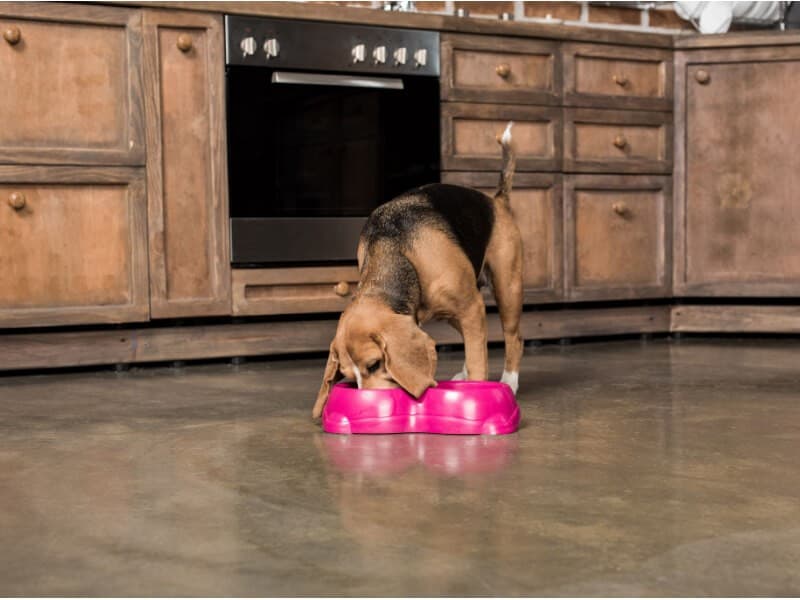
As a pet parent, you need to plan the food and nutritional requirements of your dog carefully. This is essential for keeping your four-legged companion healthy. Whether you choose to buy dog food or prepare it yourself, providing a well-balanced meal is a must.
The meal should be a mix of carbohydrates, proteins, vitamins, fats, water, and minerals. The amount and combination of these nutritional elements depend on your dog's weight, age, lifestyle, and physical condition.
Below you will find key information regarding what to buy for a new puppy concerning their food & nutrition.
Understanding your dog’s dietary requirements
Irrespective of whether you choose to feed your homemade pet meals or premium commercial food, it is necessary to understand your dog’s dietary requirements.
The dietary requirements are mostly influenced by the following factors:
- The dog's breed
- The dog’s size
- The dog’s age
- Food allergies and sensitivities
- You and your dog’s personal preferences
- Activity level
- Health status
- Physiological state
If you are buying dog food, then read the labels carefully and look for balanced and complete nutrition. This will ensure that the dog food has the correct mix of nutrients.
On the other hand, if you are preparing cooked meals for your dog, follow recipes prepared by nutritionists to meet the dietary requirements.
Nutrients Your Dog Needs
Buying dog food products that provide the required nutrients to your pet form a major component in any new puppy checklist.
Here is a list of essential nutrients usually needed by all dogs:
- Protein- It provides essential and non-essential amino acids that are vital for life. Dogs need protein for maintaining their thick coat of hair, skin, nails, bones, and muscles.
- Fats- They are a concentrated source of energy. Linoleic acid, Omega-3, and Omega-6 are some of the essential fatty acids required by dogs.
- Carbohydrates- They power the tissues present in your pet's body. It also helps to maintain the health of their intestines.
- Vitamins and minerals- Some of the essential vitamins and minerals your dog requires are calcium, phosphorus, Vitamin A, D, E, K, and B-complex.
- Water- Dogs need water to survive. Therefore, ensure the availability of fresh and clean water at all times.
Types of dog food
When shopping for puppy supplies in a pet store, you will be pleasantly surprised to see the food section stocked with numerous types of dog food. Here we list 5 main kinds of dog food:
- Kibble- They are dry food, usually in the shape of pellets. It provides complete nutrition to your dog. They contain carbs and meat along with essential minerals and vitamins.
- Canned- Many dogs prefer wet or canned foods. They are easily available in supermarkets and have a long shelf life.
- Semi-moist- These foods have low nutritional content and are generally given to dogs as an occasional treat.
- Home-cooked- Some pet owners go the extra mile and prepare home-cooked meals for their dogs. This helps the owners know for sure that their dogs eat a well-balanced diet.
- Raw- This is the natural form of diet. It mainly consists of raw meat and some bones mixed with organs.
How to select your dog food
What to buy for a new puppy in terms of food can be a complex decision as there are many variables to consider.
Below are some key factors you must take into account while selecting healthy dog food for your pet:
- Age of the dog- As the nutritional requirement of dogs varies according to their age, you must buy dog food that is specially formulated for their life stage.
- Size of the dog- To help your dog eat safely and comfortably, it is essential to ensure the kibble size is appropriate for them.
- The dog's activity level- Highly active dogs require more calories than dogs who are couch potatoes. Therefore, select food appropriately to avoid any health issues.
- Any specific need- If your dog has any medical condition, then choose food that will support this condition.
What dog foods are bad for dogs?
Although the store-bought dog food is convenient, it may be bad for the overall health of your dog. Some of the ingredients used to keep the costs down can wreak havoc to their digestive system and make them unhealthy.
Some of the ingredients used in dog foods that are bad for dogs and should never feature in your puppy supply list are:
- Meat by-products- They are also called 4-D meat and contain meat from questionable sources like roadkill, slaughterhouse waste, and euthanized pets. 4-D is the abbreviation for dying, dead, diseased, or disabled.
- Corn and grains- To make the price affordable, many cheap dog foods brands replace natural proteins with filler ingredients like corn and grains. However, they do provide any nutritional benefit and can hurt your dog's health.
- Dyes, preservatives, and various other synthetic ingredients- Read the labels carefully and avoid those that contain these ingredients.
Related: Best Dog Foods For Allergies
Your Dog health
When you buy a dog, taking care of their health and well-being becomes your responsibility. This includes taking them to vets for regular visits. This helps to catch any problems early on and also prevents illnesses.
The health care needs of dogs vary according to their different stages of life. For young pups, their health care routine mostly involves vaccinations and developing healthy habits, whereas treating and preventing health problems are more important for adult dogs.
Below is some vital information that is extremely important for maintaining your dog's health:
How often should your pet see a veterinarian?

All dogs must visit a vet at least once a year for an annual check-up during which the vet will listen to their lungs and heart, examine their eyes, inspect their coat for fleas, etc. These annual examinations are necessary as they are an essential part of preventive care.
Once the exam has concluded, the vet will offer suggestions about your dog's oral care, pending vaccinations, and nutrition. They will also recommend medications or additional tests if your dog has any illness.
Young pups must visit the vet more frequently (once in 3–4 weeks until they are 3 months old) as they must follow a basic vaccination schedule. Similarly, senior dogs must ideally see a vet every 6 months as they are prone to age-related injury and illnesses.
Apart from the planned visits, do not hesitate to bring your pet to see a vet during emergencies.
Check Also: Why Does My Dog Smell Like Fish?
Selecting a veterinarian
Choosing a good veterinarian must feature in your new puppy checklist. It is always a good idea to select a vet before a need arises.
Here are a few pointers for helping you pick the right veterinarian for your pet:
- Ask around- Check with your friends who have pets for vet recommendations. A personal reference is any day better than an online review.
- Check credentials- Opt for vets who have registered themselves on the American Board of Veterinary Practitioners.
- Visit a pet clinic- Scheduling a visit to a clinic will give you an understanding of their working hours, the regular and emergency medical services they offer, the number of specialists they have on board, their payment plans, etc.
- Consultation fees- Vet bills can skyrocket in no time. Therefore, check for the rates before finalizing a vet for your beloved pet.
- Location- Always choose a vet who is only a short drive away.
Vaccinations & Preventing Disease
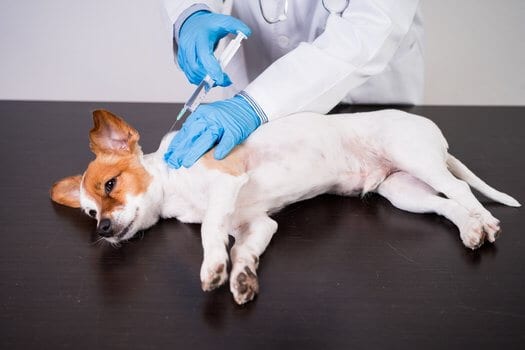
Vaccinations have established a good track record of preventing diseases in pets. Therefore, getting a puppy or an adult dog to see a vet for regular vaccinations is very important.
As a general rule of thumb, vaccinations must begin as soon as you buy a dog. However, if the puppy's mother has an excellent immune system, the puppy will receive the required antibodies through her. In this case, vaccination can start after the pup has been successfully weaned off.
Below are some of the vaccinations essential for all pups:
- Kennel cough and DHPP- administered between 6-10 weeks
- Leptospirosis, DHPP, Rabies, Lyme Disease, and Canine Influenza- administered between 11-14 weeks
- Leptospirosis, Lyme Disease, and Canine Influenza- administered between 15-16 weeks.
- Heartworm- the first test for heartworm must be generally administered at 1 to 1.5 years of age. It is highly recommended to repeat this every year.
Bathing and Grooming Your Dog
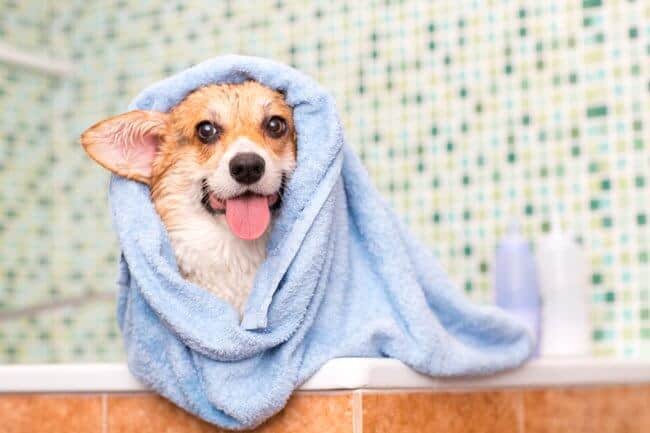
Bathing and grooming your dog as and when required is another key responsibility shouldered by pet parents. The various benefits of bathing the dog include the following:
- Eliminate loose hair
- Clean coat and skin
- Remove debris and scale
- Improve the shine of their coat
How frequently you must bathe your pet depends on their individual needs. Ideally, you must bathe your pet dog only when necessary.
This is strongly advised as frequent bathing can strip away the natural oils present on the skin and cause it to dry. This is not desirable as it may lead to many problems.
Before you go shopping for puppy supplies like dog soaps and shampoos, consult your local vet. They can recommend products suitable for your pet.
Always opt for a gentle and mild hypoallergenic shampoo for your furry pet. Apart from bathing, brushing their teeth, combing their hair, and trimming their nails are also essential.
Frequently asked questions
Even though the net is quite flooded with several first-time dog owner tips, you may still be looking for concrete answers to a few nagging questions like should I get a dog? Am I ready for a dog? How to convince your parents to get a dog? Where to get a puppy from? What happens to dogs that don't get adopted? And, so forth.
Continue to read to find answers to some of the most often asked questions:
Is it cheaper to buy or adopt a dog?
If you are not sure about where to get a puppy from- an animal shelter or pet store, the cost of adopting a dog might lure you towards the former.
It is definitely cheaper to adopt a dog than to buy one. If you plan on buying, be ready to spend anywhere between $500 to $1000. The price is even higher for some exotic breeds. On the other hand, the cost of adoption ranges from merely $50 to $200.
If you wish for a purebred dog, you can find them in shelters as they are also given away for adoption.
What happens to dogs that don't get adopted?
While many unwanted and homeless dogs find shelter in open admission pet facilities, many are inadmissible. The ones that end up in such facilities are often frightened and sick. They are either treated or put to sleep.
In order to help as many dogs as possible, many animal centers euthanize animals that are not adopted. This may sound cruel, but the alternative of turning them away will expose them to more dangers such as accidents, torture, confinement, etc.
Thus, a painless release from the world is a better alternative for dogs with a slim chance of getting adopted.
How to convince your parents to get a dog?
Before you can buy a dog, you need to figure out how to convince your parents to get a dog?
Here are a few tips to get your parents on board to get a puppy for you:
Give them a plan- Show your parents your commitment to taking care of a dog by preparing a plan for daily activities such as walks, food, and grooming.
Show them or demonstrate to your parents that you are willing to give up some time after school to take care of the dog.
Act responsibly- Start doing your household chores without creating a fuss. This will help you gain extra brownie points.
Do your research- Find out about the various breeds of dogs and choose one that is the best fit for your family. Explain your choice to your parents clearly.
What are the friendliest dog breeds?
Dogs are the sweetest and most lovable animals on the planet. They are capable of putting a smile on people's faces even in the darkest of times. It is hard to imagine them being anything but friendly. However, different breeds have slightly different personality traits and tendencies.
There are some breeds of dogs that are naturally outgoing, enjoy the company of humans, and are good with kids. Nevertheless, give a good thought to the "am I ready for a dog?" question before bringing one home.
A point to note here is that regardless of the breed, a well-socialized dog is usually a friendly dog. Therefore, it is important to treat and nurture the dog well to help him become your best friend.
Below are some of the friendliest dogs breeds you can think of bringing home:
Beagles
Golden retriever
Bearded Collie
Irish setter
Boston terriers
Labrador retriever
Boxer
English bulldog
Poodle
Pugs
Should I get a dog?
If you wish to get an ecstatic welcome home every day, then your answer to the should I get a dog question must be an emphatic yes!
However, before you head out to buy a dog, here are a few questions about what you should consider before getting a dog. Answer them honestly and base your decision accordingly:
Is everyone in your family on board with the idea?
Do you have room for the extra financial commitment?
Do you want a puppy or an adult dog?
Are you ready to make a lifelong commitment?
Have you considered the adjustment period?
Is your home big enough to accommodate the pet?
Do you have time to train the dog?
If you are unsure about the above questions, try fostering a dog before making a big commitment.
Conclusion
Before falling in love with the furry bundle of joy and rushing off to buy a dog, ensure that you will be able to provide for all your pet's needs and be willing to take full responsibility for keeping the dog happy times.
Additionally, children trying to convince their parents to buy a dog can talk to them about the various advantages of owning a dog, such as spending more time outdoors than sitting glued in front of the screen.
We hope that this article has given you some valuable insights about dog ownership and has helped you answer the most important question "am I ready for a dog?"
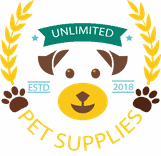





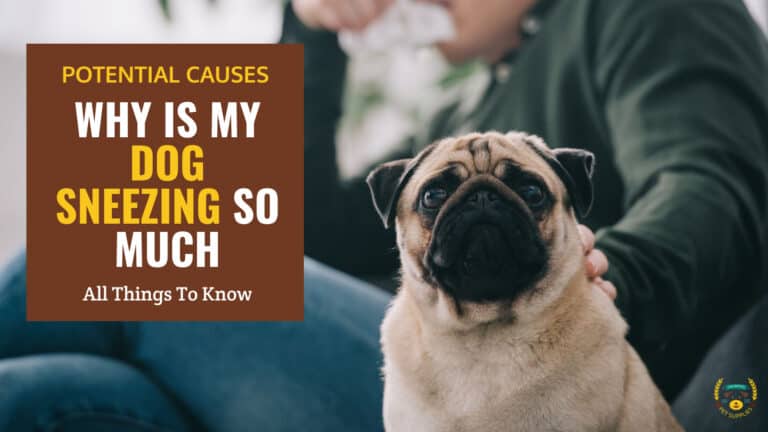
Your tips on how to successfully socialize your dog were extremely helpful, so I appreciate you putting them in the article. Since our neighborhood has a lot of other dog owners, I feel that this can be extremely easy for us since they can provide us with some help as time goes on. Once I find a pet store in the area that can help me adopt my first puppy, I'll be sure to take them around the neighborhood so they can have a fun time learning about their new environment with other dogs.
It was really helpful to read the part of your article that talked about how much time a dog needs to be raised properly. Fortunately, I have a very flexible work schedule, so I can see myself being able to keep up with these demands. Now that I have my expectations set, I'll look for any pet stores that have puppies for sale.